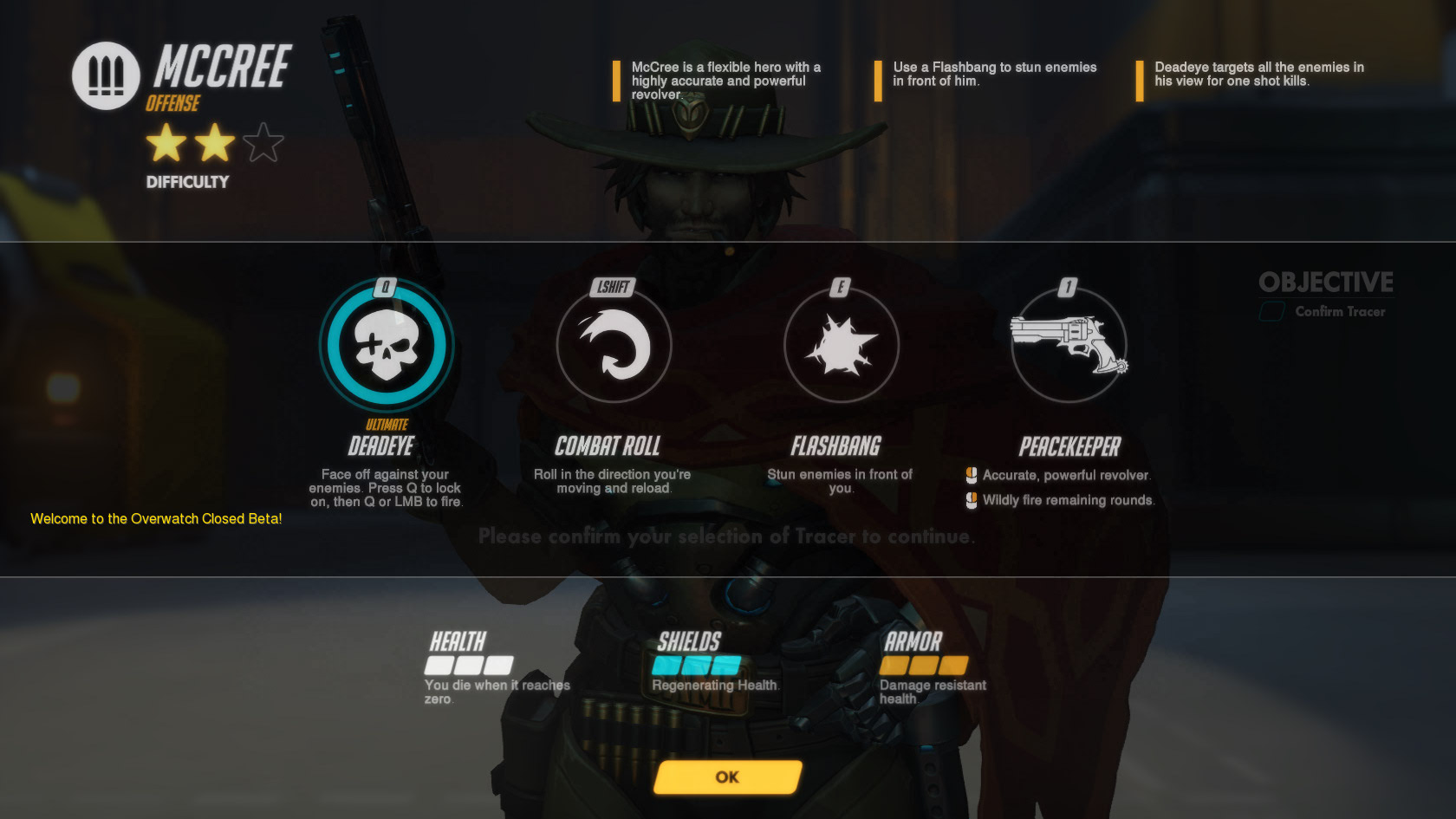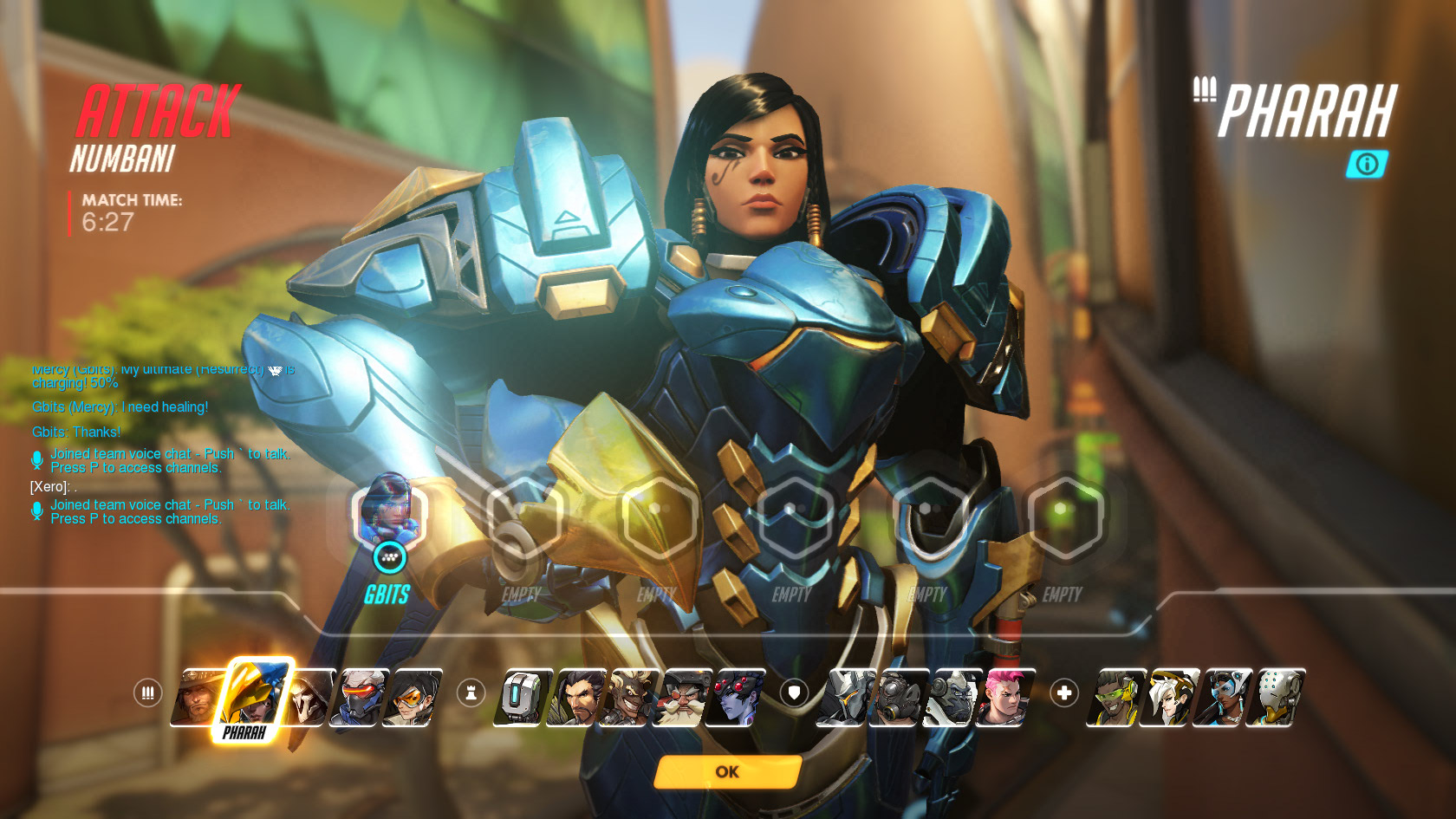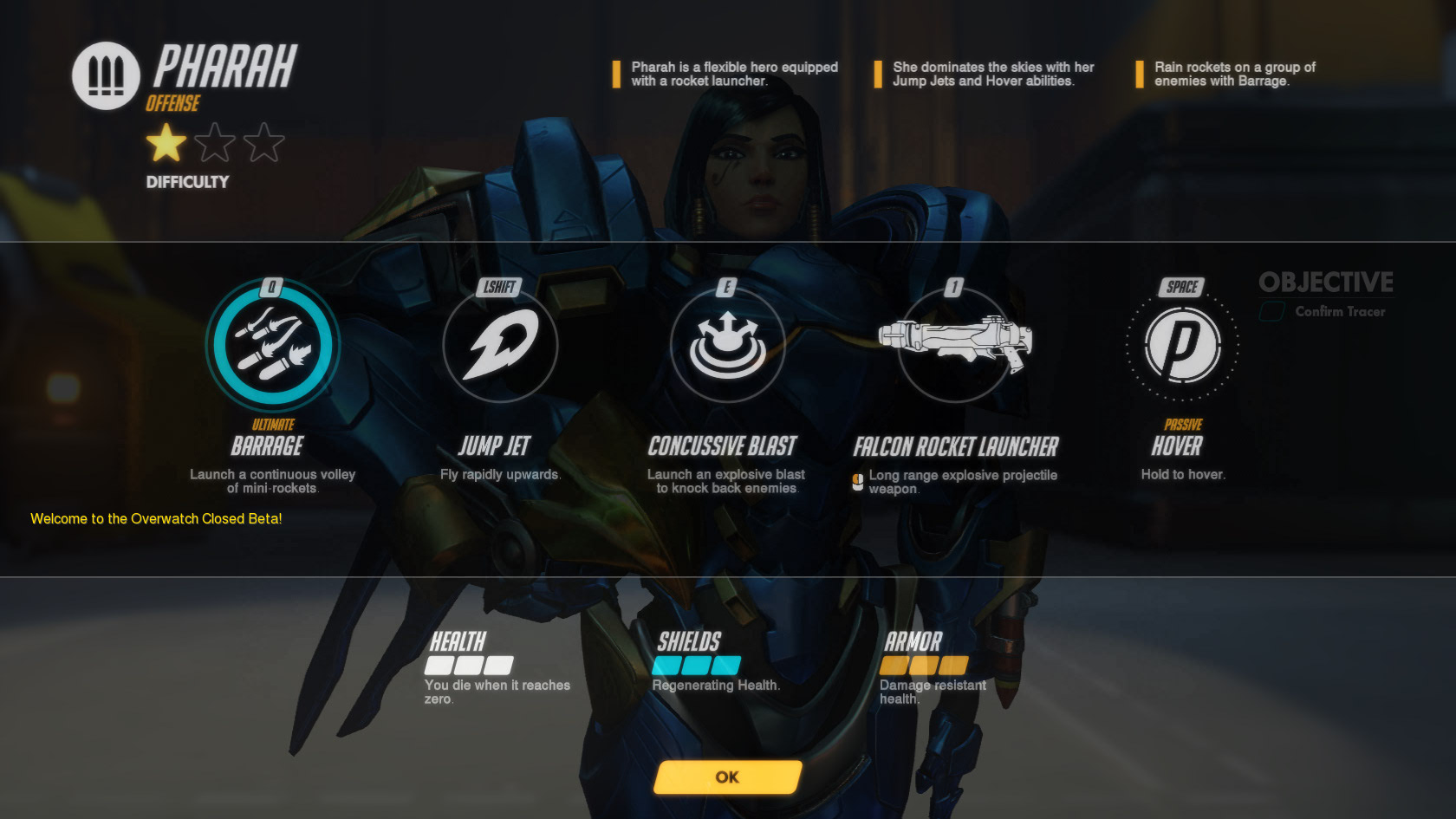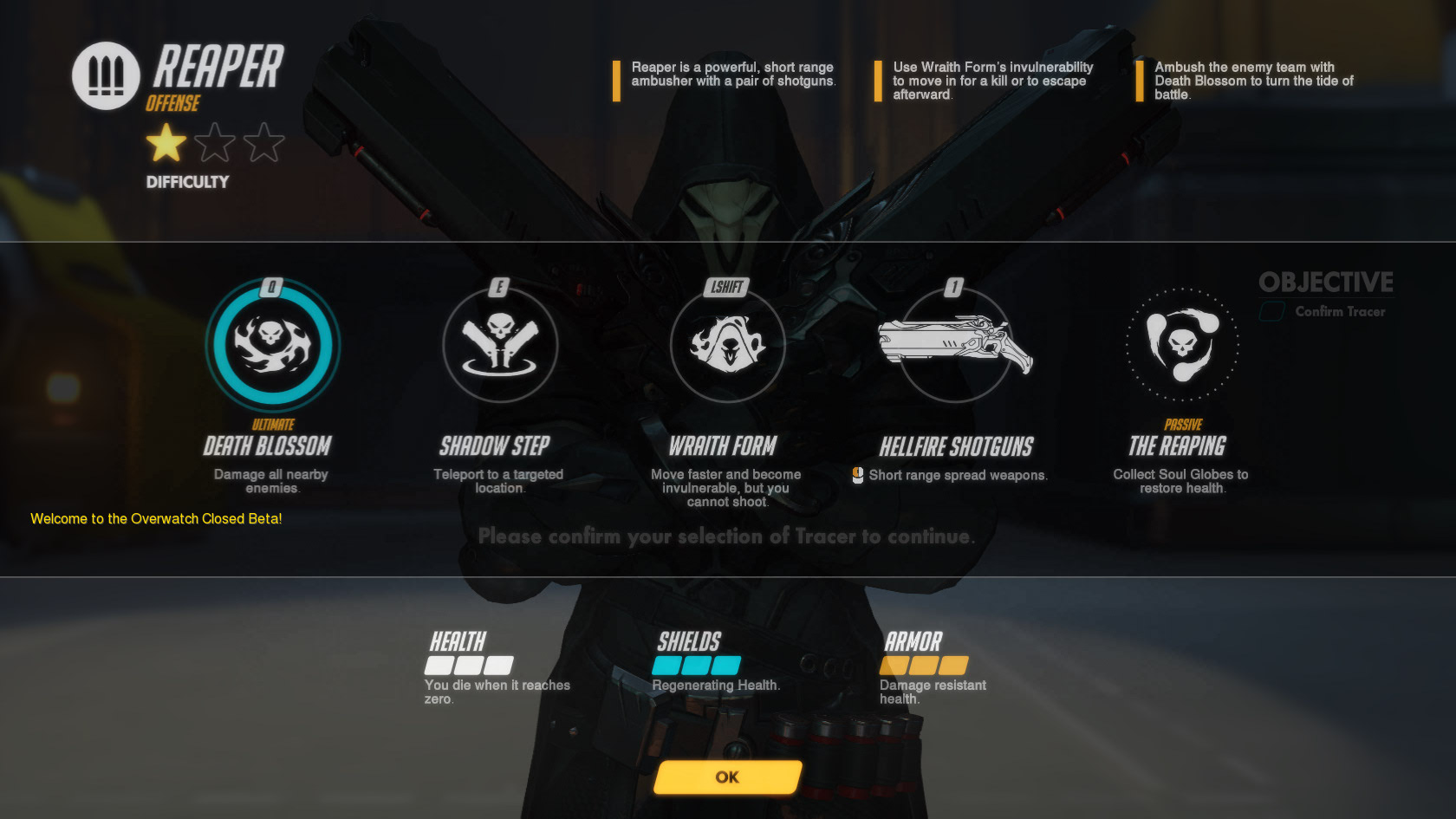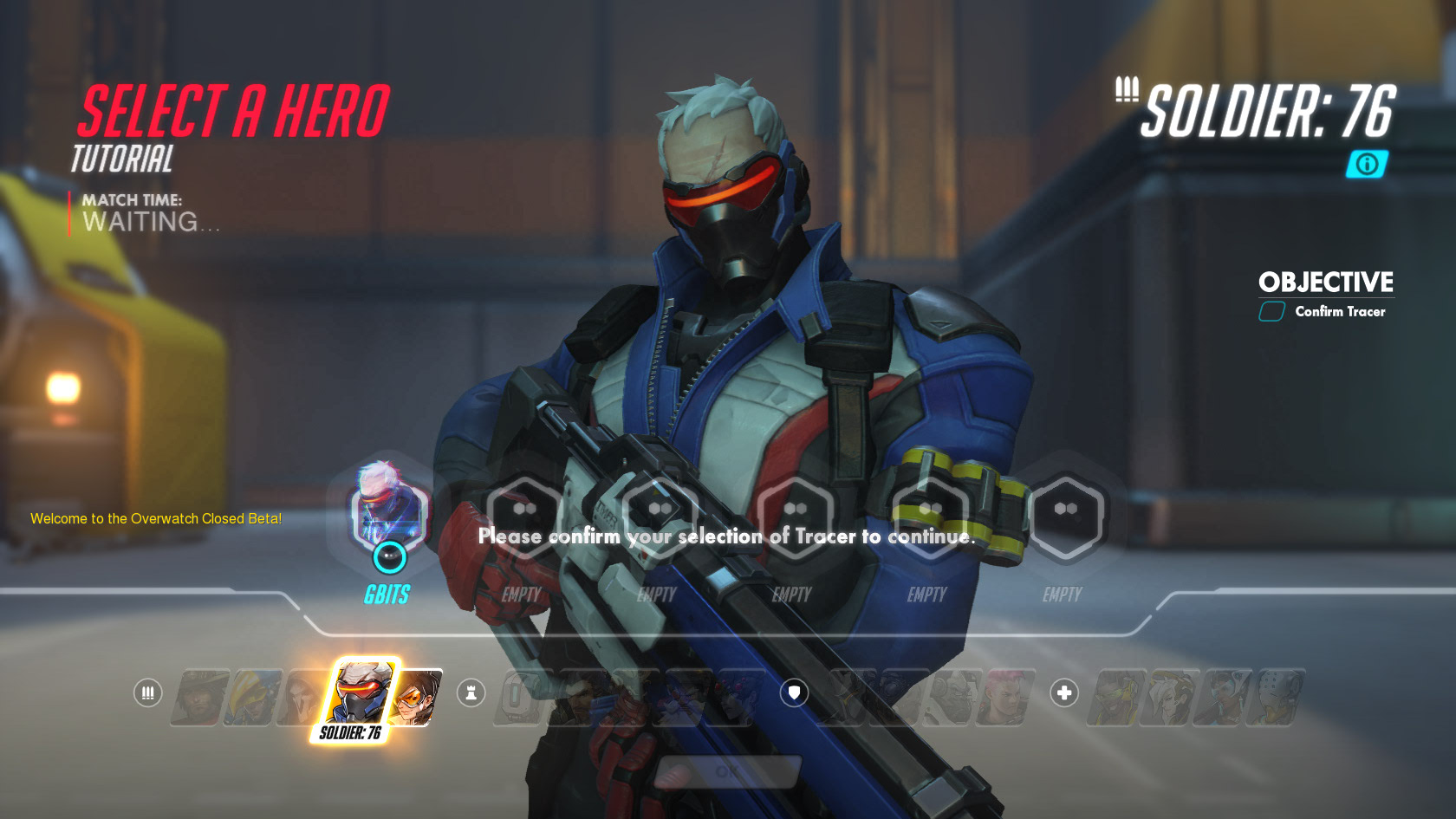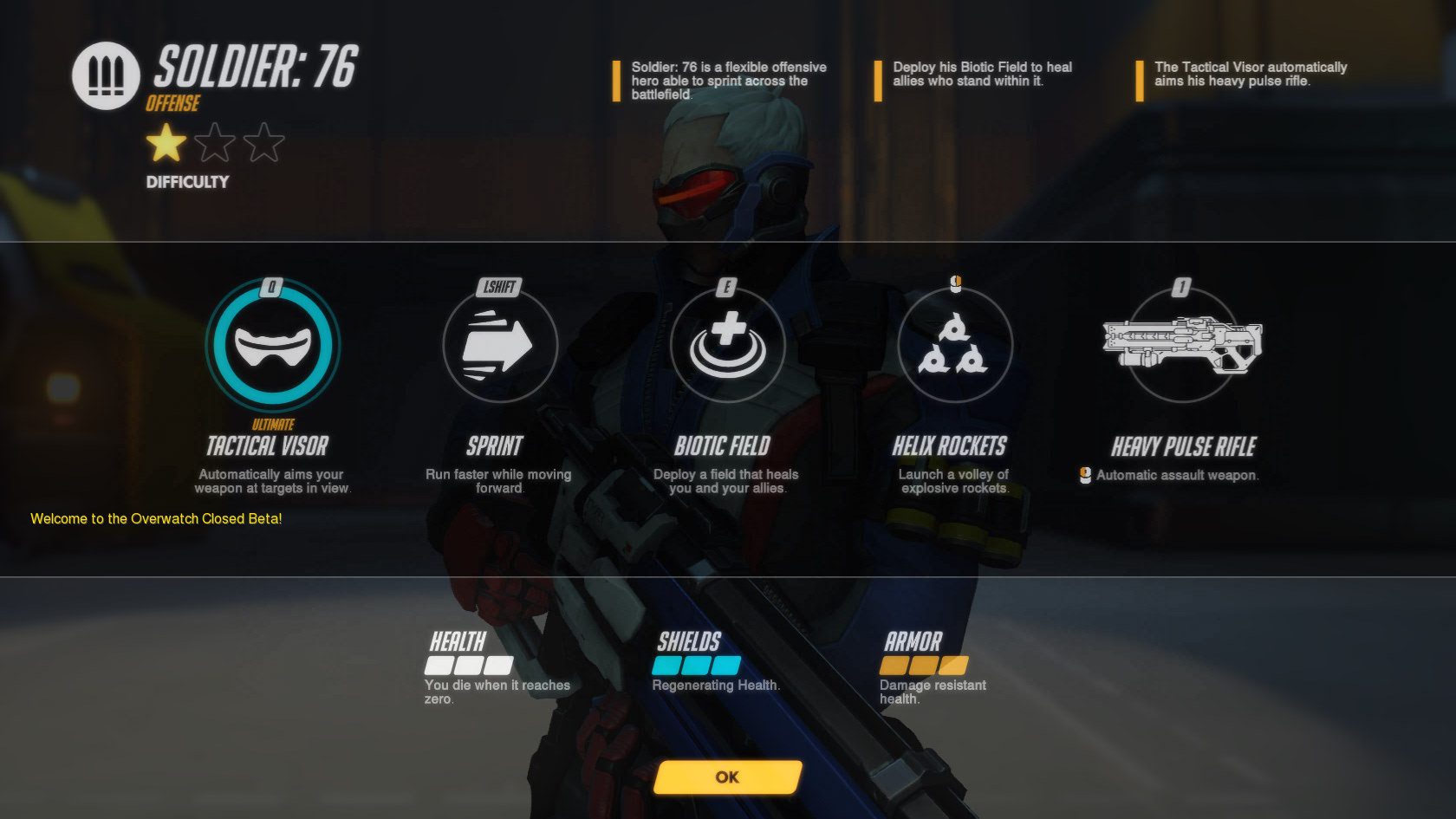A special move does unload the rest of his bullets in a spray-and-pray attack, but it’s not that effective. This is the guy you want if you’re going to nail that headshot every time; he can sometimes one-hit kill if you catch someone at a weak moment. A flashbang ability can freeze an opponent like Tracer, who he would otherwise have no hope of catching.
You can also roll toward your opponent, and McCree’s ultimate move is to lock on to someone to shoot. He was my least favorite character to play so far, but he felt powerful enough; just not yet fun enough. Blizzard ranks his difficulty as two stars.
Pharah
Pharah is a heavily armored sci-fi shooter (think StarCraft’s Jim Raynor in drag). She’s slow as molasses, but a she’s heavy hitter. Equipped with a rocket launcher, a superfun power jump and the ability to hover, she is the floating butterfly to Tracer’s zippy bee.
She can knock back enemies from range, and her ultimate ability is a rocket barrage that is oh-so-fun to unleash while airborne.
Blizzard appropriately ranks her difficulty at one star.
Reaper
Reaper is the most stylish of the damage dealers, a skull-clad killer who specializes in dramatic entrances and exits. He does a fair amount of damage with dual pistols that individually fire, though not as much as heavy shooters like McCree or Pharah. His movement speed is fairly average.
He has a shadow step, a not-quite-instant teleport in a poof of black smoke to a location you choose in reasonably close range, and a wraith form that envelopes him in smoke, making him fast and invulnerable for a short time but unable to attack.
Reaper can collect soul globes to restore his health, but either I wasn’t good enough at doing damage with him (very possible) or the globes didn’t do enough healing, because they weren’t worth the effort.
His ultimate looks like a million bucks: a short-range 360-degree damage area of effect that makes him appear to be shooting in all directions at once. Blizzard rates his difficulty at one star.
Soldier 76
You’ll start the game as Soldier 76 during the tutorial. He looks a little like Cyclops from X-Men, and he offers a solid utility player. He’s slower than Tracer, but can sprint when needed. His abilities include a healing device he can throw down for an area of effect boost, thrown explosives, and an automatic particle weapon that does decent damage.
Soldier 76’s generic name identifies his role on the offense: He’s your opponent during A.I. practice rounds, and nothing about him seems particularly interesting or endearing.
I haven’t quite made up my mind about him yet, though. There’s something about Soldier 76 that suggests he’s the Halo pistol of Overwatch, the thing so plain-Jane its offensive capabilities might be overlooked by amateur players. Not surprisingly, he gets a single star for play difficulty.
The characters: support
A team shooter is usually defined by its damage dealers, but so far, Overwatch’s most interesting characters are in other classes. That doesn’t mean characters on offense won’t entice you: Blizzard went far to make all the characters feel unique.
Support/healers rapidly became one of my favorite groups for their varied abilities.
Lúcio
Lúcio is a funky, urban EverQuest-style bard with an FPS punch. He constantly sings to himself, either healing or boosting the speed of nearby allies (and himself.) You hear those tunes, so playing with Lúcio means you’re always dancing to your own beat, and you can swap modes at will.

